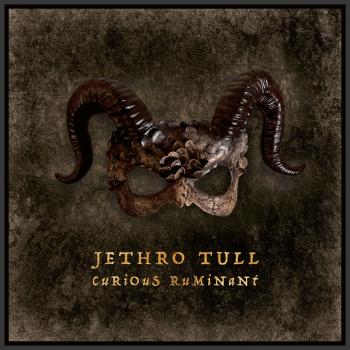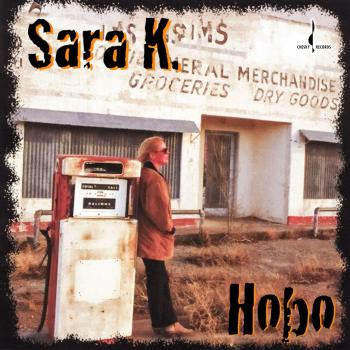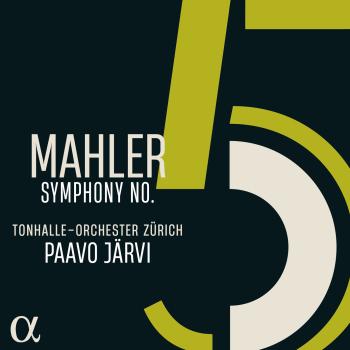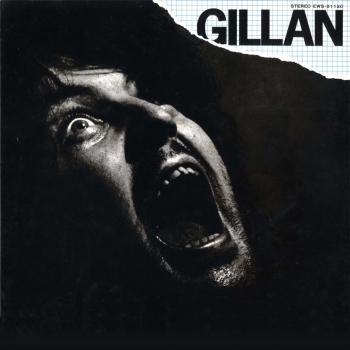
Mendelssohn: String Quartets Op. 13, Op. 44/ 1, Op. 80. Artemis Quartet
Album info
Album-Release:
2014
HRA-Release:
28.03.2014
Album including Album cover Booklet (PDF)
I`m sorry!
Dear HIGHRESAUDIO Visitor,
due to territorial constraints and also different releases dates in each country you currently can`t purchase this album. We are updating our release dates twice a week. So, please feel free to check from time-to-time, if the album is available for your country.
We suggest, that you bookmark the album and use our Short List function.
Thank you for your understanding and patience.
Yours sincerely, HIGHRESAUDIO
- 1 I. Molto allegro vivace 12:39
- 2 II. Menuetto: Un poco allegretto 05:54
- 3 III. Andante espressivo ma con moto 06:25
- 4 IV. Presto con brio 06:40
- 5 I. Allegro vivace assai 07:03
- 6 II. Allegro assai 04:24
- 7 III. Adagio 07:57
- 8 IV. Finale: Allegro molto 05:53
- 9 I. Adagio - Allegro vivace 08:13
- 10 II. Adagio non lento 08:10
- 11 III. Intermezzo: Allegretto con moto - Allegro di molto 04:54
- 12 IV. Presto - Adagio non lento 09:35
Info for Mendelssohn: String Quartets Op. 13, Op. 44/ 1, Op. 80.
The Artemis enlarge perceptions, push frontiers and perhaps question received wisdom,” wrote Gramophone of the Artemis Quartet’s 2012 Schubert album. The Berlin-based ensemble now sheds new light on Mendelssohn with these three works from three distinct periods in the composer’s career: his late adolescence, the year before he turned 30, and the final months of his short life, overshadowed by the death of his beloved sister.
The quartets of Felix Mendelssohn featured prominently in the Artemis Quartet’s performing schedule for 2012 and 2013. They appeared on programmes with works by Beethoven and Schubert, but also – more unexpectedly – alongside arrangements of Bach by Astor Piazzolla, Argentina’s king of tango, and the Quartet No 2 by his compatriot Alberto Ginastera (1916-1983).
These juxtapositions typify the Artemis Quartet’s questing, thought-provoking approach to its repertoire. As Gramophone wrote in its review of the ensemble’s 2012 Schubert album, originally released on Virgin Classics: “The Artemis enlarge perceptions, push frontiers and perhaps question received wisdom.” Classical Music magazine, meanwhile, spoke of “Bold, unflinching readings...that nevertheless offer playing of great delicacy and refinement in quieter passages,” adding that “... with some of the finest Schubert playing on disc...this is urgently recommended.”
The Artemis Quartet’s cellist, Eckart Runge, feels that “Mendelssohn is still a misunderstood composer. Some people continue to view him as somehow superficial and lacking in substance. The truth is that he was a huge talent and a huge intellect. For instance, his rediscovery and advocacy of Bach is reflected in his music. His quartets are both highly sophisticated and profoundly eloquent – they have both great emotional directness and that particular depth that characterises many composers’ work in the genre. It is also worth remembering that Mendelssohn holds a special place in cultural history, both Classical and Romantic and uniting both Germany’s Christian heritage – exemplified in the music of Bach – and the Jewish intellectual tradition.” [The composer was the grandson of the Enlightenment philosopher Moses Mendelssohn.]
The new CD, containing three of Mendelssohn’s six quartets, brings works from three distinct periods in the composer’s life: No 2 in A minor, op 13, written in 1827, when he was still a teenager; No 3 in D major, op 44, No 1, from 1838 – by which stage he was already at the peak of his career, and No 6 in A minor, op 80, composed just months before he died at the age of 38.
“No 2 and No 6 could both be described as quite radical works, while No 3 is more academic in character, showing his mastery of the form,” explains Eckart Runge. “No 2 is tightly and daringly written, taking inspiration from Beethoven’s op 132; it makes use of techniques like tremolando and recitative, which only became part of the vocabulary of the string quartet with Beethoven’s experimentation in his late works. No 6 is even more radical, though. It was written shortly after the death of Mendelssohn’s beloved sister, Fanny. He concentrates the expression of his grief into 23 minutes of music. It is dense and intensely emotional, with no room for wasted thoughts or decorative elements.”
In Runge’s words, the members of the Artemis Quartet “always try to discover what’s new or modern in whatever we play ... we want to ensure its immediacy.” Since the release of the ensemble’s Schubert CD, there has been a change in its personnel, with Vineta Sareika replacing Natalia Prishepenko as its first violinist in the 2012/13 season. “Change in a quartet’s line-up can bring new inspiration – an opportunity to broaden horizons and introduce fresh ideas – but we also wanted to ensure continuity. When we recruit a new member, we don’t look for a carbon copy of the player who is leaving. We look for the new member to bring something different, but without skewing the essential character of the group. We are not afraid to take risks, which can bring an extra intensity to what we do. The Artemis Quartet does not undertake to perform a huge repertoire, but the way we work on music is highly concentrated. We go very deep.”
Vineta Sareika, violin
Gregor Sigl, violin
Friedemann Weigle, viola
Eckart Runge, violoncello
Recorded at Studio P4, Berlin 2013
Recorded and engineered by Christoph Franke
Produced by Alain Lanceron
Artemis Quartett
Gegründet wurde das in Berlin ansässige Artemis Quartett 1989 an der Lübecker Musikhochschule als studentische Formation. Wichtige Lehrer und Mentoren des Ensembles waren Walter Levin, das Emerson-, das Juilliard- und das Alban Berg Quartett. Seit 1994 spielte es professionell und wurde schnell eines der führenden Ensembles seiner Generation.
Mit den ersten Preisen beim ARD Wettbewerb 1996 und einige Monate darauf beim „Premio Borciani“ gelang der internationale Durchbruch. Das Artemis Quartett verschob jedoch den sich aufdrängenden Beginn einer schnellen Karriere zugunsten weiterer Studien: 1998 verbrachten sie ein Studienjahr mit dem Alban Berg Quartett in Wien, gefolgt von einer dreimonatigen Residenz am Berliner Wissenschaftskolleg. Mit ihrem Debüt in der Berliner Philharmonie im Juni 1999 begaben sie sich in ihre Karriere. Im Juli 2007 kam der Umbruch: Mit Gregor Sigl und Friedemann Weigle präsentierte sich das Artemis Quartett in neuer Formation.
Seit 2004 gestaltet das Quartett eine eigene, von Publikum wie Kritik begeistert aufgenommene Serie in der Berliner Philharmonie. Das Artemis Quartett widmet sich neben einer regen Konzerttätigkeit in allen großen Musikzentren in Europa, den USA, Japan, Südamerika und Australien sowie bei internationalen Festivals, engagiert dem Unterrichten. So sind die Musiker seit 2005 Professoren für Kammermusik an der Universität der Künste Berlin und unterrichteten alternierend im Rahmen einer Gastprofessur an der „Chapelle Reine Elisabeth“ in Brüssel.
Von Anfang an maß das Artemis Quartett dem Musizieren mit namhaften Kollegen einen hohen Stellenwert bei. Zuletzt gingen sie auf Tourneen mit Juliane Banse, Truls Mørk und Leif Ove Andsnes. Die Auseinandersetzung mit zeitgenössischer Musik spielt ebenfalls eine wichtige Rolle in der Arbeit des Quartetts. Komponisten wie Mauricio Sotelo (2004), Jörg Widmann (2006), und Thomas Larcher (2008) schrieben Werke für das Artemis Quartett.
Parallel zum Konzertleben und zu einem frühen Zeitpunkt seiner Karriere begegnete das Artemis Quartett dem Medium Film: Bereits 1996 waren die Musiker in einer EMI-Produktion Gäste des Alban Berg Quartetts, und zwar in dem nach Schuberts gleichnamigem Streichquartett betitelten Film „Der Tod und das Mädchen“ von Bruno Monsaingeon. Fünf Jahre darauf stand das Artemis Quartett erneut vor der Kamera des großen Regisseurs. In „Strings Attached“ (WDR, 2001) zu Beethovens Großer Fuge op.133 widmete Monsaingeon den Musikern ein eindrucksvolles filmisches Porträt.
Der Verein des Beethoven- Hauses Bonn zeichnete das Artemis Quartett im Jahr 2003 für Verdienste um die Interpretation der Werke Beethovens mit der Ehrenmitgliedschaft aus. 2004 erhielt das Quartett den 23. „Premio Internazionale Accademia Musicale Chigiana“ in Siena. 2005 unterschrieb das Artemis Quartett einen Exklusiv-Vertrag mit Virgin Classics/EMI, der mindestens 10 Aufnahmen innerhalb von fünf Jahren vorsieht. Die erste CD-Aufnahme in neuer Besetzung, Schuberts Streichquintett in C-Dur (mit dem Cellisten Truls Mørk) wurde mit dem "Preis der Deutschen Schallplattenkritik" ausgezeichnet. Eine Einspielung mit den Streichquartetten Nr. 2 op. 59 und Nr. 44 op. 18 von Beethoven erschien im Herbst 2009.
Auch das Jahr 2010 steht ganz im Zeichen des Beethoven Zyklus: Im April 2010 veröffentlichte Virgin Classics die Streichquartette Nr. 6, op. 18 und Nr. 13, op. 130, Nr. 17,. op. 133 „ Große Fuge“ sowie eine Wiederauflage mit den Quartetten Nr. 14, op. 131, Nr. 2, op. 18, Nr. 15, op. 132 und Nr. 9 „Razumovsky“, op 59/3. Zuletzt erschien im Oktober 2010 eine CD mit Beethovens Streichquartetten Nr. 1, op. 18 und Nr. 12, op. 127.
Die Veröffentlichungen des Artemis Quartetts – früher bei Ars Musici heute bei Virgin Classics/EMI – sind vielfach ausgezeichnet worden, unter anderem mit dem „Deutschen Schallplattenpreis“ und dem „Diapason d’Or“. Im Oktober 2006 bekam das Quartett für die beste Einspielung in der Kategorie "Kammermusikeinspielung des Jahres“ für ihre Interpretation der Beethoven Quartette op. 95 & 59/1 den „ECHO - Klassik“. Im Herbst 2008 wurde die CD mit den Klavierquintetten von Brahms und Schumann (mit Leif Ove Andsnes) mit einem Gramophone Award in der Kategorie „Kammermusik“ ausgezeichnet. Im Herbst 2010 bekam das Quartett den Preis der Deutschen Schallplattenkritik im Bereich Kammermusik für ihre Einspielungen der Beethoven Streichquartette Nr. 6, op. 18, Nr. 13, op. 130 und Nr. 17, op. 133 „Große Fuge“.
Booklet for Mendelssohn: String Quartets Op. 13, Op. 44/ 1, Op. 80.














